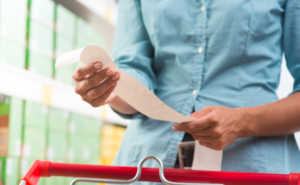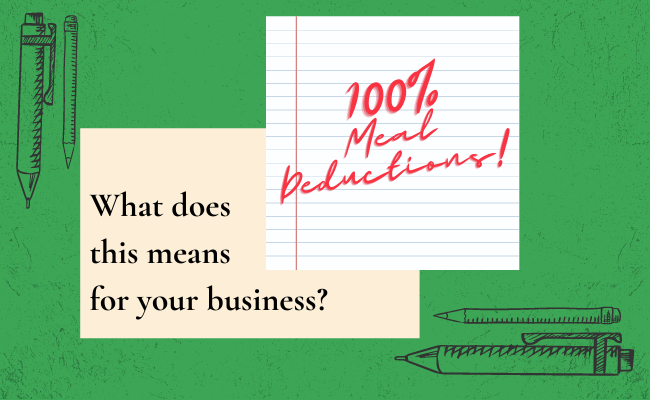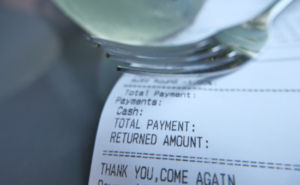100% deductible meals, what does that mean for you?
Deduct 100 Percent of Your Business Meals under New Rules
Now, new IRS regulations, you have fresh opportunities for writing off 100 percent of your business meals.
For 2021 and 2022, you can deduct 100 percent of your business meals by paying attention to a few new, easy rules.
It’s fairly easy to understand, but like all government regulations there are some sticky points.
Now 100 Percent Meal Deduction
We have all known for a while that the government has been reigning in meal deductions for 50%. Lets face it who didn’t seek in a nonbusiness related meal or two in there every once in a while. Of course as always exceptions did apply to that rule. However, right now those exceptions aren’t important, because for the next two years (2021 & 2022) business meals are 100% deductible.
(With some exceptions of course, I’ll explain them in a moment)
This is in an effort to boost both the economy in general, as well as the restaurant industry that has been devastated throughout the pandemic. (Not that others have suffered just as bad.)

What is needed to Qualify as a Qualified Meal?
- You need a restaurant to provide you with the food or beverages.
Something of note: you do not have to necessarily eat in the restaurant, take out and food deliveries like Grubhub and Ubereats count. In other words, you can dine in the restaurant, order takeout, or use delivery.
Conference room lunch anyone?
Business Meal Rules

Rule 1. Your deductible business meals must be tax code Section 162 ordinary and necessary business expenses, and they must not be subject to disallowance under tax code Section 274. (sounds scary but it’s not)
Rule 2. You may deduct lavish or extravagant business meals. You are not likely to have a problem, regardless of what you spend. Here’s why:
- The IRS states: “Meal expenses won’t be disallowed merely because they are more than a fixed dollar amount or because the meals take place at deluxe restaurants, hotels, or resorts.”
- The Bloomberg BNA Tax Management Portfolio on entertainment deductions states: “No reported case to date has ever upheld a disallowance of a taxpayer’s travel, entertainment, or meal expenses on the grounds that they were ‘lavish and extravagant under the circumstances.’”
Dolla dolla bills Y’all, can we day company outing at a Michelin star?
Rule 3. You must be present at the business meal, and you must provide the business meal to a person with whom you could reasonably expect to engage or deal with in the active conduct of your business, such as a customer, client, supplier, employee, agent, partner, or professional advisor, whether established or prospective.
Basically it’s time to switch over to elastic waist pants!
What’s an IRS-Defined Restaurant?
Remember, to qualify for the 100 percent deduction, you need a restaurant. The IRS recently provided definitions and examples of what is and is not a restaurant.
A restaurant is “a business that prepares and sells food or beverages to retail customers for immediate consumption, regardless of whether the food or beverages are consumed on the business’s premises.”
What’s not an IRS-Defined Restaurant?
A restaurant is not “a business that primarily sells pre-packaged food or beverages not for immediate consumption,” including, but not limited to, the following
- Grocery stores

- Specialty food store
- Beer, wine and liquor spirits
- Drug stores
- Convenience stores
- Newsstands
- Vending machines or kiosks
However, the 50 % limitation applies to business meals from the sources listed above. At least that is something,
Bookkeepers advice: Not only keep track of your means but separate the meals into 2 categories 100% deductible and 50% deductible. You bookkeeper will thank you!

50% Rule
Assume each of the examples below occurs during tax year 2021.
50% Rule: You are out of town on business and stay at a hotel where you have a kitchen in your room. You go to the grocery store and buy food and beverages to consume while in the hotel room.
50% Rule: You are driving from your home to an out-of-town business destination for a two-day, overnight business seminar. On your way, you stop at a small-town gas station convenience store and buy a hot dog and coffee for lunch. Why? Because gas stations sell primarily prepackaged food.
Also, ewh gas station hot dog.
50% Rule: You provide a break room for your employees, with coffee, bagels, and assorted snacks that you buy in bulk from a wholesale retailer such as Costco.
100% Rule
100% Rule: You are out of town on business and stay at a hotel for five days. You go to the local coffee shop across the street -way to support local business- from the hotel each day to get breakfast and your morning coffee prior to your work meetings.
100% Rule: You meet for lunch with a customer at your office. You order food from a local Greek restaurant and have it delivered to your office. Why because it is immediate and delivered from a restaurant.
You can include the delivery fees and tip as a food and beverage expense.
100% Rule: You meet with a prospective client at a local restaurant to discuss working together on a business deal. You order food and beverages for both yourself and the prospect.
100% Rule: You drive six hours away from home for a two-day, overnight business trip. On your way, you stop at a fast food chain and buy a hamburger and coffee for lunch.
100% Rule: You take two clients to a baseball game. You buy food and drinks from a hot dog stand inside the stadium, for yourself and your clients.
Something of note: This expense isn’t a non-deductible entertainment expense because you purchased the food and drinks separately from the baseball game tickets.
100% Rule: You take two clients to a baseball game. You buy a suite that provides food and beverage service, including cooked foods and prepared alcoholic beverages. The invoice separately states the food and beverage expense.
Also, baller for renting the whole box!
Something of note: This expense isn’t a non-deductible entertainment expense because you purchased the food and drinks separately from the baseball game tickets.
100% Rule: You provide a break room for your employees with coffee, bagels, and assorted snacks that you have delivered daily from a local restaurant using a food delivery app.
Um, greatest boss ever! Am I right?
You can include the delivery fees and tip as a food and beverage expense.
The Per Diem Problem
If you simply deduct a per diem meal expense for out-of-town business travel, or pay your employees a per diem, you can deduct only 50 percent of that expense.
If you deduct your actual expenses instead of the per diem, you can shift your expenses to being 100 percent deductible for the next two years.
The overall Per Diem Breakdown:
You are out of town overnight on business, you spend $12 for breakfast, $20 for lunch, $35 for dinner, and $7 for coffee during the day. that a total of $74. You buy these items from locations that qualify as restaurants.
- If you use the per diem method, you can deduct only 50 percent of the $74 per diem, or $37.
- If you deduct your actual expenses, you can deduct 100 percent of the $74 you spent on food and beverages.
Itemized deductions for the WIN!
And because each of your meal expenses was under $75, you don’t face a tax record-keeping difference because you don’t need to keep receipts for business meals that are less than $75. (However, you do need to make a record of them.) For your bookkeepers sanity save the receipts!
For this and other article to help enhance your business follow us on Social Media
Facebook: @cdprofessionalservices
Instagram: @cdprofessionalservices




